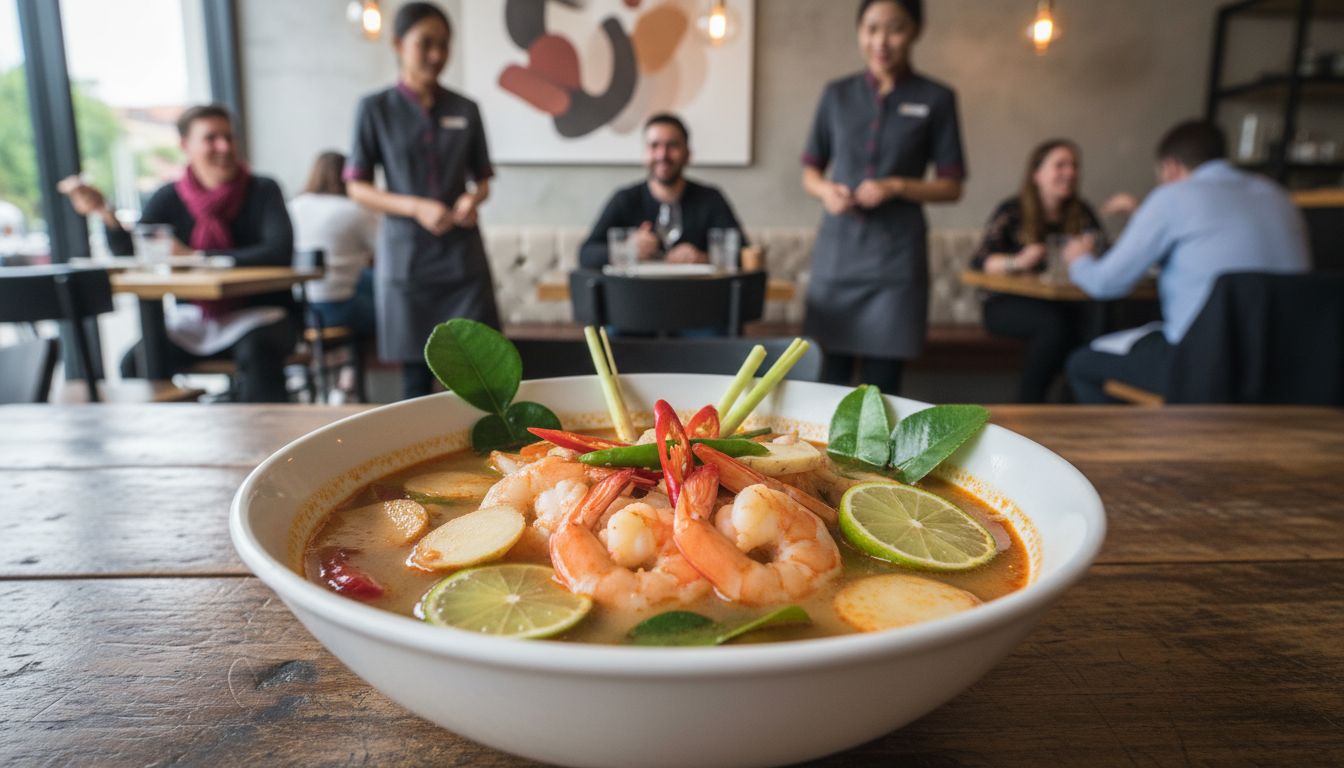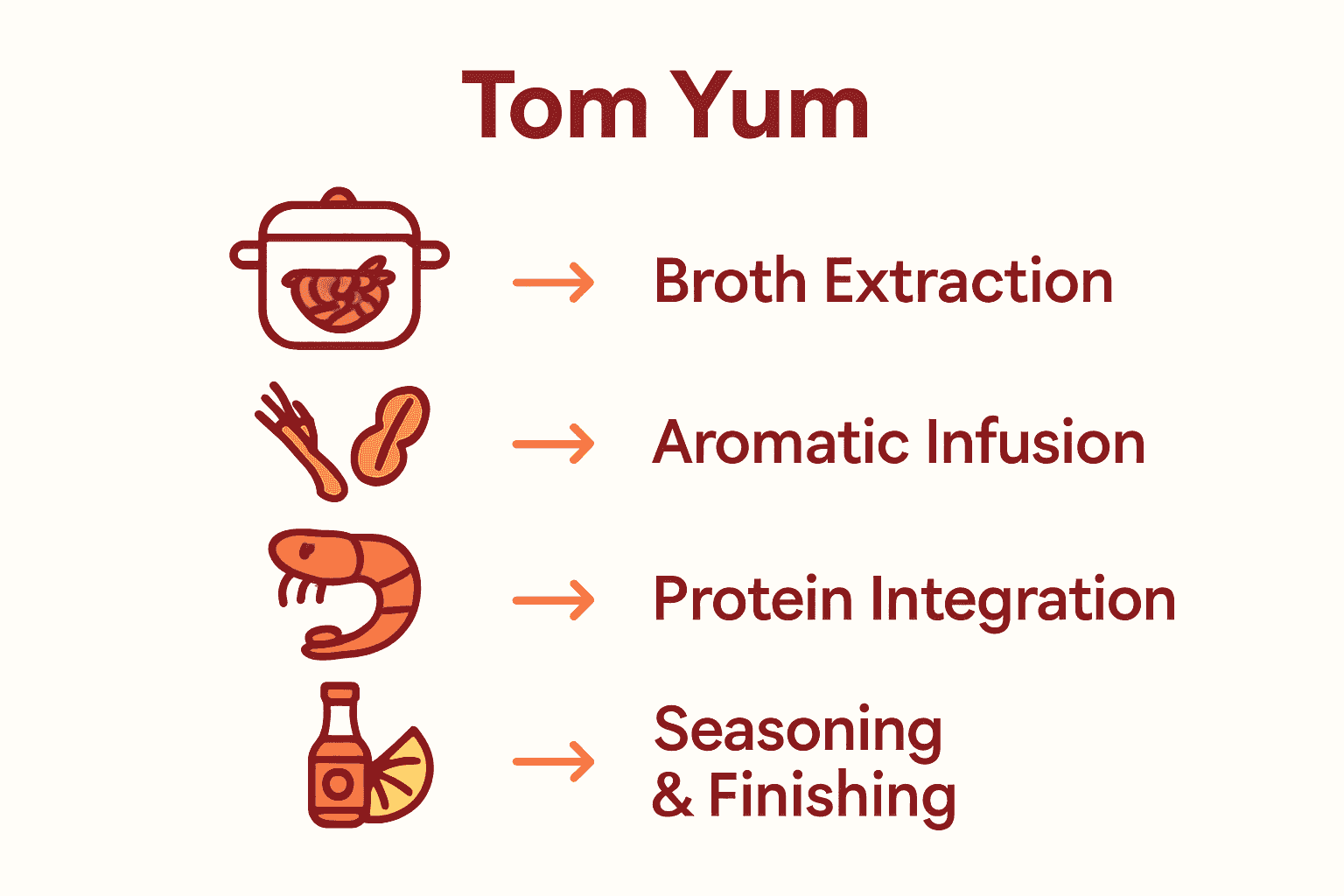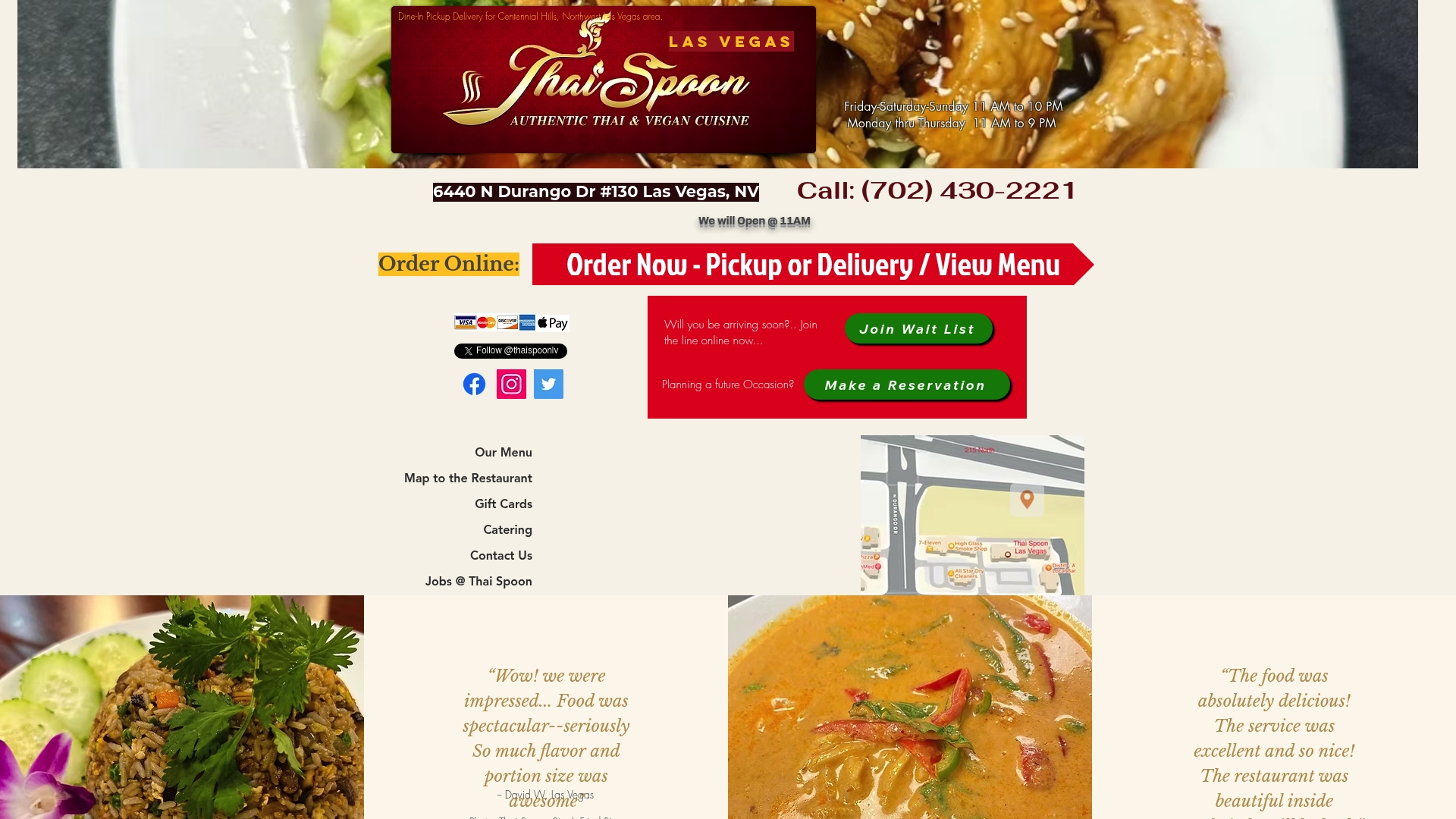What Makes Tom Yum Soup: Complete Thai Guide
- mail469793
- 2 days ago
- 6 min read

Over 130 years have passed since Tom Yum Soup’s earliest recorded recipe graced Central Thailand kitchens. This legendary dish stands out not only for its bold spicy and sour flavors but also for its deep ties to Thai culture and culinary history. Exploring Tom Yum’s origin, signature ingredients, and regional twists offers a flavorful journey into what makes Thai cuisine cherished worldwide and helps unlock the secrets behind its unforgettable taste.
Table of Contents
Key Takeaways
Point | Details |
Cultural Significance | Tom Yum Soup is a symbol of Thai culinary spirit, reflecting the country’s philosophy of flavor balance and showcasing local ingredients. |
Key Flavor Profile | The soup is defined by its spicy and sour flavors, created through a precise mix of ingredients such as lemongrass, kaffir lime leaves, and fresh shrimp. |
Preparation Techniques | Traditional Tom Yum preparation involves careful layering of flavors, starting with broth extraction from shrimp shells and infusing aromatics. |
Common Mistakes | Avoid overcooking shrimp, adding lime juice too early, or skipping fresh aromatics to maintain the soup’s authentic flavor profile. |
Defining Tom Yum Soup And Its Origin
Tom Yum Soup represents one of Thailand’s most iconic culinary treasures, a vibrant and aromatic dish that captures the essence of Thai flavor complexity. According to Thai Enquirer, this ancient soup originated in Central Thailand, with its earliest documented recipe dating back to 1888, initially featuring snakehead fish and later evolving to incorporate succulent freshwater shrimp from the Chao Phraya River.
The soup’s profound cultural significance extends beyond mere nutrition. Thailand Foundation describes Tom Yum as a “symbol of Thai culinary spirit” that beautifully embodies the nation’s culinary philosophy of flavor balance. Its ingredients reflect the resourcefulness of riverside communities, transforming local seafood and herbs into a harmonious gastronomic experience.
At its core, Tom Yum is characterized by a distinctive spicy and sour flavor profile achieved through carefully selected ingredients:
Lemongrass: Provides citrusy, herbaceous undertones
Kaffir Lime Leaves: Contributes a complex, aromatic brightness
Galangal: Adds a sharp, peppery warmth
Fresh Shrimp: Delivers a rich, oceanic depth
Understanding the nuances of Tom Yum helps appreciate what makes Thai cuisine truly unique. Each spoonful tells a story of cultural heritage, culinary innovation, and the remarkable ability of Thai chefs to transform simple ingredients into extraordinary dishes.
Essential Ingredients And Flavor Profile
Tom Yum Soup represents a masterclass in culinary balance, with each ingredient carefully selected to create a symphony of flavors. According to Hospitality Institute, the soup’s complex profile seamlessly blends spicy heat, tangy sourness, subtle sweetness, and saltiness into an extraordinary gastronomic experience.
The essential ingredients form the backbone of Tom Yum’s distinctive taste. Thailand Foundation highlights how the soup derives its signature complexity from a precise combination of components that create a harmonious flavor landscape.
Key Flavor Components:
Spiciness: Derived from Thai chilies
Sourness: Fresh lime juice
Saltiness: Fish sauce
Umami: Fresh prawns
Signature Aromatics:
Lemongrass: Provides citrusy, bright undertones
Kaffir Lime Leaves: Contribute complex, fragrant notes
Galangal: Adds sharp, warming depth
To fully appreciate the nuanced flavors of Tom Yum, understanding the fundamentals of Thai taste profiles becomes essential. Each ingredient plays a crucial role, transforming simple components into a remarkable culinary experience that captures the essence of Thai cooking.

Popular Variations And Regional Styles
Tom Yum is not just a single recipe, but a diverse culinary tradition with multiple regional interpretations. According to Wikipedia, the soup exists as a family of hot and sour Thai dishes featuring fascinating variations that reflect local preferences and ingredients.
Two primary broth styles dominate the Tom Yum landscape: tom yum nam khon (creamy version) and tom yum nam sai (clear version). Wikipedia highlights that these variations dramatically change the soup’s flavor profile, with the creamy version offering a mellow, smooth taste and the clear version presenting a more intense, robust flavor.
Regional Protein Variations:
Shrimp (Tom Yum Kung): The most classic and internationally recognized version
Chicken (Tom Yum Gai): Popular in northeastern Thailand
Pork (Tom Yum Moo): Common in central Thai regions
Mixed Seafood: Coastal area specialty
The versatility of Tom Yum is remarkable. Whether you prefer a complex exploration of Thai flavor profiles or a simple, hearty soup, there’s a Tom Yum variation waiting to tantalize your taste buds. Each regional style tells a story of local ingredients, cooking traditions, and the incredible culinary creativity of Thai cuisine.
Traditional Cooking Techniques Explained
Tom Yum preparation is an art form that demands precision and understanding of flavor layering. According to Hospitality Institute, creating the perfect soup involves a meticulous sequence of ingredient integration, where each component is added to build a complex and harmonious flavor profile.
The cooking process begins with broth preparation. Thailand Foundation explains that traditional techniques start by boiling shrimp shells to extract rich umami essence. This foundational step is crucial in developing the soup’s deep, nuanced flavor before introducing aromatics like lemongrass, kaffir lime leaves, and galangal.
Key Cooking Stages:
Broth Extraction: Boil shrimp shells to create umami base
Aromatic Infusion: Simmer lemongrass, kaffir lime leaves, galangal
Protein Integration: Add shrimp or chosen protein
Seasoning: Finish with fish sauce and fresh lime juice
Pro Tips:
Control spiciness by adjusting chili quantities
Use fresh ingredients for maximum flavor
Serve immediately to preserve aromatic intensity
To truly master these techniques, understanding the fundamentals of Thai flavor profiles becomes essential. The magic of Tom Yum lies not just in its ingredients, but in the delicate balance and timing of their preparation.

Common Mistakes And Serving Suggestions
Preparing Tom Yum requires finesse and careful attention to detail. According to Hospitality Institute, home cooks often encounter specific challenges that can dramatically impact the soup’s final flavor and texture.
Critical Cooking Mistakes to Avoid:
Overcooking Shrimp: Results in tough, rubbery texture
Adding Lime Juice Too Early: Causes unwanted bitterness
Skipping Fresh Aromatics: Diminishes authentic flavor profile
Incorrect Seasoning Balance: Disrupts the signature spicy-sour harmony
Ideal Serving Recommendations:
Garnish with fresh cilantro
Serve piping hot alongside steamed rice
Add final seasoning adjustments just before serving
Use fresh, high-quality ingredients
Understanding Thai flavor profiles becomes crucial in mastering Tom Yum. The Thailand Foundation emphasizes that preserving the soup’s fresh flavors requires precise timing and technique. The difference between an average and exceptional Tom Yum often lies in these subtle yet critical details.
Discover Authentic Tom Yum Soup at Thai Spoon Las Vegas
Tom Yum soup is more than a dish it captures the true spirit of Thai cuisine with its perfect balance of spicy heat, tangy sourness, and fresh aromatics like lemongrass and kaffir lime leaves. If you’ve been craving the complex flavors described in “What Makes Tom Yum Soup: Complete Thai Guide” but worry about getting it just right at home from controlling the spice level to using fresh ingredients we understand the challenge.

Enjoy an authentic taste experience without the hassle by visiting Thai Spoon Las Vegas where we prepare Tom Yum soup using traditional cooking techniques and the freshest ingredients. Whether you want to savor it in our welcoming dining room, order delivery for convenience, or explore our full menu including vegan and gluten-free options you will find the perfect way to satisfy your craving right here in northwest Las Vegas. Don’t wait to taste the rich umami and balanced flavors you read about. Start your culinary journey now by ordering from our online menu or stop by to experience the authentic Thai flavors you deserve.
Frequently Asked Questions
What are the essential ingredients of Tom Yum soup?
The essential ingredients of Tom Yum soup include lemongrass, kaffir lime leaves, galangal, fresh shrimp, fish sauce, Thai chilies, and fresh lime juice, all contributing to its signature spicy and sour flavor profile.
What are the main cooking techniques for preparing Tom Yum soup?
The main cooking techniques include boiling shrimp shells for broth extraction, infusing aromatics like lemongrass and galangal, integrating the chosen protein, and seasoning with fish sauce and lime juice at the end for optimal flavor.
What are the common mistakes to avoid when making Tom Yum soup?
Common mistakes include overcooking shrimp, adding lime juice too early, skipping fresh aromatics, and incorrect seasoning balance, which can negatively impact the flavor and texture of the soup.
How can I adjust the flavors in Tom Yum soup?
You can adjust the flavors by modifying the quantities of fresh chilies for spice, adding more lime juice for sourness, or balancing saltiness with fish sauce, ensuring a harmonious blend that matches your taste preferences.
Recommended











Comments